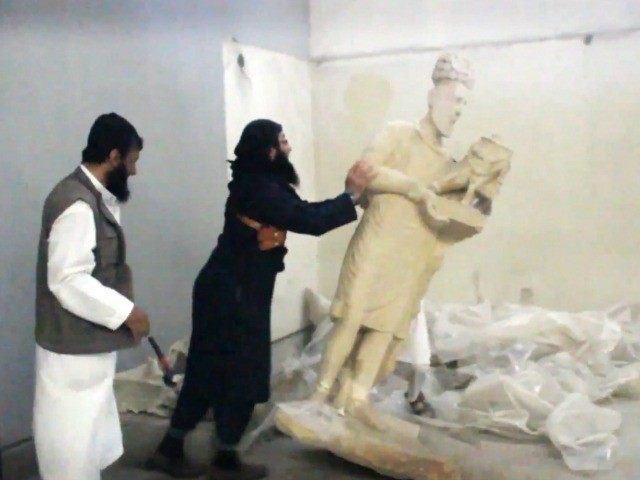After years of campaigning for ancient artifacts to be returned from foreign museums to the nations where they were found, archaeologists and museum officials are rethinking the concept of “repatriation”–particularly in Iraq and Syria, where the Islamic State (ISIS/ISIL) has made destruction of historical artifacts a priority.
Repatriation, a concept currently widely accepted by groups like the United Nations Educational, Scientific and Cultural Organization (UNESCO) and major museum curators, is the act of returning priceless artistic and cultural items to their native lands. Many of these arrived in Western museums through questionably legal means decades ago, and the nations where they were found have become increasingly vocal about retrieving them.
While it has not become a widespread practice, repatriation has become increasingly accepted, and in areas of low conflict, demand for repatriation has risen. In Australia, for example, this week, aboriginal groups are demanding that a London museum return a collection of indigenous artifacts set to be displaced this November in the Australian capital of Canberra. As an elder aboriginal leader tells The Guardian, “If the Ngambri people went to England, killed 90% of the population and everything else that is indigenous to England and sent the crown jewels back to Ngambri Country as a prize exhibit … what would the remaining 10% of English people have to say about that?”
The artifacts would likely be safe if publicly displayed in Australia. In Syria and Iraq, that is not necessarily the case. The Islamic State, which has taken under its control large territories in both countries, routinely target archaeological sites and museums for destruction, arguing that they promote idol worship that is against their extremist interpretation of Islam. While they consider the destruction of artifacts, particularly those belonging to ancient pagan civilizations, a religious duty, Islamic State terrorists are not above selling them on the black market. Artifacts, along with oil, make up most of the Islamic State’s million-dollar industry.
But what they cannot sell, they destroy. Most recently, Islamic State terrorists released a video showing the destruction of the Museum of Mosul in Iraq, using hammers to destroy ancient statues displayed in the museum’s halls.
While there is a growing movement of museum curators and archaeologists traveling across Syria attempting to salvage what they can from ISIS, some Western experts have begun to argue it is not in civilization’s best interests to put even more priceless items in the line of fire for the sake of “anti-colonialism.” A report from PRI notes that, while many have been attacked as supporters of “cultural racketeering” for opposing repatriation, some experts still argue that keeping artifacts out of danger zones is the wise choice.
“I think that we have a stake in world culture, everyone does, and that stake is to preserve it for the future,” says James Cuno, whose trust runs Los Angeles’ Getty Museum. As such, museums currently holding artifacts from countries in turmoil have a responsibility to protect them, not place them in the line of fire. “Encouraging curiosity about the world’s artistic legacy is to encourage tolerance for difference in the world,” he adds, arguing that, often, UNESCO “tries to encourage the repatriation of objects claimed by nation states simply because they claimed them, and not because there is evidence that they have been removed illegally or inappropriately.”
Another expert, Gary Vikan, former director of Walters Art Museum in Baltimore, agrees, stating, “I think [ISIS behavior] will put an end to the excess piety in favor of the repatriation model.”

COMMENTS
Please let us know if you're having issues with commenting.